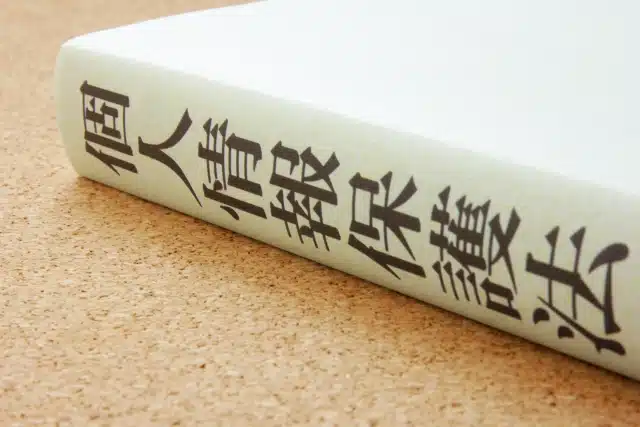Stock Exchanges and Share Transfers in Japanese Corporate Law: A Guide to Establishing a Wholly Owned Subsidiary Relationship

In the pursuit of growth strategies, mergers and acquisitions (M&A) and internal group reorganizations are vital options for companies. In particular, there may arise a need to establish a wholly-owned subsidiary relationship to expedite decision-making and maximize synergy effects across the group by making a company a 100% subsidiary. Under Japanese Corporate Law, two main methods are provided for creating such wholly-owned subsidiary relationships: “share exchange” and “share transfer.” Share exchange is often used when an existing company aims to make another company a wholly-owned subsidiary and is frequently utilized in the context of M&A. On the other hand, share transfer is a typical method used when establishing a new holding company and placing one or more operating companies under it as wholly-owned subsidiaries. A significant feature of these systems is that they legally enable the establishment of a 100% controlling relationship, including over dissenting minority shareholders, without obtaining individual consent for the transfer of shares from all shareholders, by means of a special resolution at the shareholders’ meeting based on the principle of majority rule. Due to this powerful effect, the procedures are strictly defined by Japanese Corporate Law, and it is essential for managers and legal professionals to understand these details accurately. This article provides a detailed explanation, based on legal grounds, of the definitions of share exchange and share transfer under Japanese Corporate Law, the differences between the two systems, and the specific procedural flow.
Overview of Share Exchange and Share Transfer
Both share exchange and share transfer are organizational restructuring actions that establish a complete parent-subsidiary relationship, but the core difference lies in whether the company becoming the complete parent is an “existing company” or a “newly established company.” This fundamental distinction dictates the objectives and procedural frameworks of each system.
What Is a Share Exchange?
Under Japanese Corporate Law (Article 2, Paragraph 31), a share exchange is defined as “a stock company acquiring all issued shares of another stock company or a limited liability company” . In this procedure, the company that acquires the shares to become the complete parent is an already existing company . Shareholders of the company becoming the complete subsidiary transfer all their shares to the complete parent company and receive compensation in the form of shares of the complete parent company or money. After the share exchange, the legal personality of the company that has become the complete subsidiary does not cease to exist, allowing for a smooth and gradual integration of management while maintaining necessary licenses, employment contracts with employees, and contractual relationships with business partners . Due to these personalityistics, share exchanges are primarily used as a means of M&A to bring a company under the umbrella as a complete subsidiary.
What Is a Share Transfer?
A share transfer, as defined in Article 2, Paragraph 32 of the Japanese Corporate Law, is “one or more stock companies having all their issued shares acquired by a newly established stock company” . The most significant feature of this procedure is that the company becoming the complete parent is “newly established” through the share transfer process . One or more existing companies have their entire shares acquired by this newly established company, becoming its complete subsidiaries. As a result, the newly established company takes on the role of a holding company, overseeing the management strategies of its subsidiaries . Share transfers are used when a single company transitions to a holding company structure (single share transfer) or when multiple companies establish a common parent company to integrate management on an equal footing (joint share transfer) .
The nature of the parent company is also reflected in the names of the documents that form the basis of the procedures. Since a share exchange is an agreement between two or more existing legal entities, its content is defined by a “share exchange agreement.” On the other hand, a share transfer is a self-contained act where existing companies reorganize themselves and simultaneously establish a new company, so its content is defined by a “share transfer plan.”
Comparison of Both Systems
Understanding the differences between the legal frameworks and practical applications of share exchange and share transfer is crucial in selecting the appropriate method for corporate reorganization. The most fundamental difference between the two lies in whether the complete parent company is an existing company or a newly established one, which leads to several important distinctions.
Firstly, the documents that form the basis of the procedures differ. As mentioned earlier, share exchange is carried out based on a “share exchange agreement” that records the consensus between the parties, whereas share transfer is conducted based on a “share transfer plan,” which serves as the blueprint for the establishment of a new company.
Next, the timing when the effects of the reorganization take place differs. The effects of a share exchange occur on the “effective date” determined by the parties in the share exchange agreement. In contrast, the effects of a share transfer occur on the day the registration of the newly established complete parent company is completed. Therefore, in a share transfer, it is not possible to contractually set a specific date in advance as the effective date.
These differences lead to a clear distinction in the main purposes of using each system. Share exchange is commonly used for M&A where an existing company acquires another company, or to bring a subsidiary fully under the control within an existing corporate group. On the other hand, share transfer is a suitable method for establishing a new holding company to manage the group’s overall business strategy or for management integration of multiple companies on an equal footing.
The main differences between the two systems are summarized in the table below.
| Feature | Share Exchange | Share Transfer |
| Nature of Parent Company | Existing Company | Newly Established Company |
| Foundational Document | Share Exchange Agreement | Share Transfer Plan |
| Effective Date | Date determined in the agreement | Date of registration of the new company |
| Main Purpose of Use | M&A, Full Subsidiarization within Existing Group | Establishment of Holding Company, Management Integration of Multiple Companies |
Procedures for Stock Exchange Under Japanese Corporate Law
The procedures for a stock exchange are carried out through multiple stages as stipulated by the Japanese Corporate Law, with stringent requirements imposed to protect stakeholders such as shareholders and creditors.
Concluding a Stock Exchange Agreement Under Japanese Corporate Law
The process of a stock exchange begins with the conclusion of a “stock exchange agreement” between a company that will become the complete parent company and a company that will become the wholly-owned subsidiary. This agreement typically requires the approval of the board of directors of each company. Article 768, Paragraph 1 of the Japanese Companies Act stipulates the matters that must be specified in a stock exchange agreement (statutory disclosure items), and contracts that do not contain these items are invalid. The main statutory disclosure items are as follows:
- The trade name and address of the complete parent company and the wholly-owned subsidiary
- Details regarding the consideration to be provided to the shareholders of the wholly-owned subsidiary (for example, the number of parent company shares and the method of calculation, cash, bonds, rights to subscribe for new shares, etc.)
- Matters related to the allocation of consideration
- Conditions for issuing new subscription rights to the parent company to the holders of the new subscription rights if the wholly-owned subsidiary has issued such rights
- The date on which the stock exchange takes effect (effective date)
Pre-Disclosure and Shareholders’ Meeting Approval Under Japanese Corporate Law
After concluding a stock exchange agreement, both companies must provide the necessary information for shareholders and creditors to review the details of the stock exchange. Based on Articles 782 (Wholly Owned Subsidiaries) and 794 (Complete Parent Companies) of the Japanese Companies Act, it is required to prepare and make available ‘pre-disclosure documents’ containing statutory matters at the principal office from a specified date, such as two weeks before the shareholders’ meeting . The specific contents that should be included in these pre-disclosure documents are detailed in the Enforcement Regulations of the Japanese Companies Act (for example, Article 184), and include matters such as the content of the stock exchange agreement and the fairness of the consideration .
Furthermore, the stock exchange must be approved by a ‘special resolution’ at the shareholders’ meetings of both the complete parent company and the wholly owned subsidiary before the day preceding the effective date of the stock exchange . A special resolution generally requires the attendance of shareholders holding a majority of the voting rights eligible to be exercised and the approval of at least two-thirds of the voting rights of the attending shareholders (Article 309, Paragraph 2, Item 12 of the Japanese Companies Act).
Dissenting Shareholders’ Right to Demand Share Repurchase Under Japanese Corporate Law
While decisions on share exchanges are made by majority vote, Japanese Corporate Law recognizes the “right to demand share repurchase” to protect the interests of dissenting shareholders. This right allows shareholders who oppose the share exchange to demand that the company repurchases their shares at a “fair price” (Article 785 of the Japanese Corporate Law). To exercise this right, shareholders must notify the company of their opposition to the share exchange prior to the general shareholders’ meeting and must actually cast a dissenting vote at the meeting. Subsequently, they formally request the repurchase of shares during the period from 20 days before the effective date until the day before.
The interpretation of “fair price” is crucial here. This price is not specifically defined by law and, if the parties cannot agree, it is ultimately determined by the court. Japanese case law provides important guidelines for calculating this “fair price.” Notably, the Tokyo District Court’s decision on March 14, 2008 (the former Kanebo case), determined that the “fair price” should be the price the shares would have had if the reorganization had not been approved, known as the “hypothetical non-reorganization price”. This approach eliminates the undue influence of the share exchange announcement on the stock price and protects minority shareholders. Furthermore, the decision stated that minority shareholders, who are forced to exit the company due to the majority’s decision and not by their own will, should not be subject to a price discount based on illiquidity (difficulty of selling in the market) or minority status (being a minority shareholder). This judicial decision has a significant impact on business practices, particularly regarding how to ensure the fairness of consideration in share exchanges.
If the parties cannot agree on the price within 30 days from the effective date, either the shareholder or the company may apply to the court for a price determination within the subsequent 30 days.
Creditor Objections Procedure Under Japanese Corporate Law
In a stock exchange, the corporate personality of the wholly-owned subsidiary continues to exist, and its assets and liabilities are transferred as they are, which generally does not directly affect the position of creditors. Therefore, unlike mergers, the creditor protection procedure (creditor objections procedure) is not always required. This procedure is necessary only in specific cases where there is a potential risk to the interests of the creditors.
According to Articles 789 and 799 of the Japanese Companies Act, the main instances where a creditor objections procedure is necessary are as follows:
- For creditors of the wholly-owned subsidiary: When the wholly parent company assumes the obligations related to the bonds with subscription rights to new shares issued by the wholly-owned subsidiary as a result of the stock exchange.
- For creditors of the wholly parent company: When the wholly parent company provides property other than its shares (for example, cash) as consideration to the shareholders of the wholly-owned subsidiary. This is because the assets of the parent company are being transferred outside of the company.
When the procedure is required, the company must publish a notice in the Official Gazette and also individually notify known creditors, providing them with an opportunity to raise objections for a period of at least one month. If a creditor raises an objection, the company is generally required to either settle the claim with the creditor, provide adequate security, or entrust an equivalent property to a trust company or similar entity.
Effectuation and Post-Disclosure
On the effective date specified in the stock exchange agreement, the legal effect of the stock exchange comes into force, and the complete parent company acquires all shares of the wholly-owned subsidiary, while the shareholders of the wholly-owned subsidiary receive the agreed consideration. Following the effectuation, both companies must promptly prepare ‘post-disclosure documents’ detailing the results of the stock exchange and other relevant information, and keep these documents available at their respective head offices for a period of six months from the effective date, as required by Article 791 of the Japanese Companies Act. The contents of the post-disclosure documents are stipulated by Article 190 of the Enforcement Regulations of the Japanese Companies Act and include details such as the progress of the share purchase request procedures.
Procedures for Share Transfer Under Japanese Corporate Law
The procedures for share transfer are similar to those for share exchange in many respects, but there are several important differences due to the nature of establishing a new wholly owning parent company.
Creation of a Share Transfer Plan
The share transfer process begins with the company that will become a wholly owned subsidiary creating a “share transfer plan.” This plan must include statutory items as stipulated by Article 773 of the Japanese Companies Act. In addition to the items listed in a share exchange agreement, the share transfer plan requires essential information about the newly established wholly owning parent company. The main statutory items to be included are as follows:
- The purpose, trade name, location of the head office, and total number of shares that can be issued by the newly established wholly owning parent company
- Other matters prescribed by the articles of incorporation of the newly established wholly owning parent company
- The names of the directors at the time of the establishment of the newly established wholly owning parent company
- The number of shares of the newly established parent company to be allotted to the shareholders of the wholly owned subsidiary and the method of calculation
- Matters concerning the amount of capital stock and reserves of the newly established wholly owning parent company
Related Procedures and Effective Date
After the creation of the share transfer plan, a series of procedures including prior disclosure (Article 803 of the Japanese Companies Act), approval by special resolution at the shareholders’ meeting, the right of dissenting shareholders to demand the purchase of their shares (Article 806 of the Japanese Companies Act), and, if necessary, creditor objection procedures (Article 810 of the Japanese Companies Act) will be carried out. These procedures are almost identical to those for share exchange.
However, the timing of when the effects come into force is critically different. The share transfer becomes effective on the day the registration of the establishment of the wholly owning parent company, as defined in the share transfer plan, is applied for at the Legal Affairs Bureau and the registration is completed. Only with this registration does the wholly owning parent company come into existence as a legal entity and simultaneously acquire all the shares of the wholly owned subsidiary.
After the effective date, the newly established wholly owning parent company and the wholly owned subsidiary are required to jointly prepare post-disclosure documents and keep them at their respective head offices for a period of six months from the effective date (Article 811 of the Japanese Companies Act, Article 210 of the Companies Act Enforcement Regulations).
Simplified and Summary Procedures Under Japanese Corporate Law
Japanese Corporate Law allows for simplified procedures that can omit shareholder approval resolutions when the impact on shareholders is minor or when a strong controlling relationship already exists. This is a rational system design that balances the protection of shareholder rights with the demands of agile corporate management. Understanding these procedures is practically important for swiftly and efficiently advancing organizational restructuring.
Simplified Share Exchange
The “Simplified Share Exchange” is a system that allows the omission of a shareholder meeting resolution on the side of the wholly owning parent company when the impact of the share exchange on the financial position of the wholly owning parent company is minimal (Article 796, Paragraph 2 of the Japanese Corporate Law) . The requirements for this procedure are that the total value of the consideration (such as shares or cash of the parent company) to be provided to the shareholders of the wholly owned subsidiary does not exceed one-fifth (20%) of the net assets of the wholly owning parent company . However, even if this requirement is met, if a shareholder holding more than one-sixth of the total voting rights of the wholly owning parent company notifies their opposition to the share exchange within two weeks of receiving notice or announcement from the company, shareholder meeting approval is required as a general rule .
Summary Share Exchange
The “Summary Share Exchange” is a system that allows the omission of a shareholder meeting resolution on the side of the controlled company when there is already a strong controlling relationship between the companies involved . This procedure applies when there is a “special controlling relationship,” where the wholly owning parent company holds more than 90% of the voting rights of the wholly owned subsidiary (Article 784, Paragraph 1 and Article 796, Paragraph 1 of the Japanese Corporate Law) . In this situation, since the outcome of the resolution at the subsidiary’s shareholder meeting is evident, approval is deemed unnecessary to reduce procedural burdens. However, there are a few exceptional cases where the summary procedure cannot be used, such as when the consideration is restricted transfer shares and the wholly owned subsidiary is not a public company .
Conclusion
Share exchange and share transfer are powerful and flexible legal mechanisms provided by the Japanese Companies Act to establish a 100% complete parent-subsidiary relationship. Share exchange is suitable for M&A to make an existing company a parent company, while share transfer is appropriate for creating a holding company structure or for equal management integration by establishing a new parent company. Both methods can bind minority shareholders with a special resolution of the shareholders’ meeting, yet they also have strict provisions to protect stakeholders, such as the right of dissenting shareholders to demand the purchase of their shares and creditor objection procedures under certain circumstances. These procedures are complex and require strict compliance with statutory deadlines and disclosure obligations, making meticulous planning and legal expertise essential for execution.
Monolith Law Office boasts a wealth of experience and specialized knowledge in representing numerous domestic and international clients in share exchanges, share transfers, and other complex corporate reorganizations under Japanese corporate law. Our firm includes several bilingual attorneys, including those qualified as foreign lawyers and English speakers, enabling us to provide seamless and comprehensive support to international clients—from strategic planning and contract drafting to guidance at shareholders’ meetings and compliance with various legal procedures. If you require specialized assistance with matters discussed in this article, please feel free to consult us.
Category: General Corporate





















